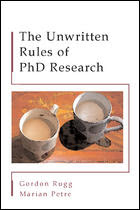Next month, a referendum will ask voters in the UK
At present, the UK uses the “first past the post” system to elect MPs to the House of Commons. Should the “alternative vote” system be used instead?

Official Poll Card
When our Official Poll Cards dropped through the letterbox last week, I realised I did not have much knowledge about the question I was about to be asked. Which way should I vote? I cannot say I have a passion for politics, but I do have a sense that I “ought” to vote. I decided to do my homework.
The BBC’s Q and A on the topic seem straightforward enough, and are certainly easier to wade through than the garish colours of the yes and no campaigns. (It occurred to me that these colours are probably used to avoid the red, blue or yellow of the main political parties in the UK.)


Yes or No?
Critics of the current (FPTP) system point out what they see as its key weakness – that a candidate can be elected having won less than 50% of the votes. This happened to two thirds of the MPs in the current parliament. An AV system forces candidates to appeal to a broader section of the electorate, in the hope of winning their second or third choice slots.
The No campaign, on the other hand, argue that AV is complicated and costly to implement. I do think that AV is more confusing. Whilst the concept of ranking candidates is intuitive, it is more complicated under AV to think about the details of the vote you cast – is it better to rank a candidate you are neutral about, third choice or not at all? This pair of blog posts discuss tactical voting under AV in some detail.
Should I follow the campaign of the political party I voted for in the general election? It seems that each party is supporting the Yes or No campaign based on which would result in the best outcome for them at a subsequent General Election, not that one would expect them to behave otherwise.
My PhD research involves conducting simulation studies, albeit not on voting theory. Would be possible to simulate the results of the general election under AV, to see how much difference it would make if we were to change the voting system?
Take the most recent General Election in the UK, in May 2010. Using the vote counts from the 2010 election, would it be possible to conduct a simulation study? One could make some assumptions about how voters might rank subsequent candidates based on the first choices that they indicated on their ballot papers, and see how the outcome would change if voters ranked one, two, three or more candidates in addition to their first choice. The assumptions would be crude and would not represent the results of candidates’ campaigning with the AV system in mind.
The closest thing I found to this suggestion was a paper published in Parliamentary Affairs. Simulating the Effects of the Alternative Vote in the 2010 UK General Election. This study, by David Sanders and colleagues from the University of Essex and the University of Texas at Dallas, is somewhat more sophisticated than my idea.
Surveys conducted around the time of the General Election campaign asked voters how they voted, and further, asked voters to complete an electronic ballot form that mimicked an actual AV ballot. In comparing the two sets of votes, the authors report that not all voters voted for their first preference as expressed on the AV ballot paper, in the FPTP survey. This is to be expected, as some voters will vote tactically in the FPTP system.
The survey data used in this study is sizeable. However, there are not sufficient respondents in each constituency to evaluate what the outcome might be constituency by constituency. Working with the data they do have, the authors simulate the behaviour of voters in different constituencies. Their simulations suggest that AV would leave the Conservatives as the strongest party in England; however the Conservatives would be somewhat worse off than under FPTP. This has implications for the structure of the subsequent coalition. According to the simulation, under AV the Liberal Democrats would have won sufficient seats to be in a position to form a majority coalition with either the Conservatives or Labour, something that was not possible in May 2010 when further parties would have had to join a potential Labour-Lib Dem coalition to form a majority.
This simulation study is an interesting exercise, but it is still some way from representing how voters might have behaved had they witnessed an election campaign which was conducted with the AV system in mind. So I throw this question to the floor.
Should I align my vote in the referendum with my politics? Is there a way to decide how to vote based on logic? There was some debate about whether to impose a minimum turnout on the referendum – which was decided against. Will sufficient people vote in the referendum to represent what the British public wants? If I am not passionate about politics, is it worth my time to vote at all?




















